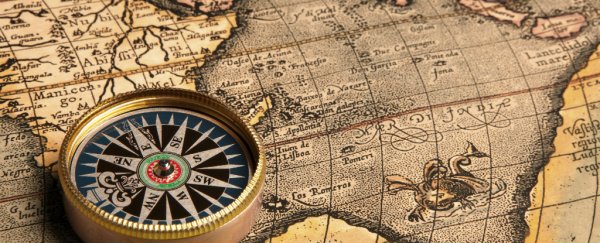With the human population up around the 7.4 billion mark, it's safe to say that if there's somewhere good to live on Earth, there'll be someone living in it. Or many someones, as the case may be, because we've somehow grown from less than 1 billion in the space of just two centuries, and we're expected to reach 11.2 billion in the year 2100.
And as of right now, we're trying to find room for 6.5 percent of all humans who have ever been born, so we're at the point now where we've combed Earth's resources pretty thoroughly (even if we've missed a few spots).
But it wasn't always like this - before we flung satellites up into the atmosphere, humans missed some pretty key places on the planet.
As the episode of RealLifeLore above explains, there are a number of landmasses on Earth that were oddly overlooked until relatively recently, and they were huge, and nearby some well-established civilisations. So what happened?
Well, if we start at the beginning of humanity itself in Africa, we can make an educated guess based on fossil remains that humans started migrating out of Ethiopia around 195,000 years ago.
It took until around 160,000 to 140,000 years ago for the first humans to discover the neighbouring region of Sudan, but by 125,000 years ago, they'd managed to make it all the way down the southern coast of the African continent.
They'd even figured out how to make it across the sea to modern day Yemen.
The first humans set foot in India around 70,000 years ago, and then in South East Asia around 3,000 years later. Things really took off around then, with humans discovering Egypt and much of the African continent, and then Australia, 48,000 years ago.
That discovery of Australia is pretty special, because the people who arrived there first, and their descendants, remained almost completely undisturbed by other humans until the Brits arrived in 1770.
That means Indigenous Australians today constitute the oldest continuous society on Earth.
Things start to heat up around the 46,000-years-ago mark, and with the spread of humans came the mysterious disappearance of the Neanderthals. (But not before they slept with us and messed with our immune systems forever).
Fast-forward to 40,000 to 25,000 years ago, and humans discovered a whole new continent (hello, Americas), and now we really started filling in some gaps all over the world, as the video above explains.
What's really surprising, though, is the places we missed. Like, how did we only discover Madagascar, which is huge, and right next to the African continent, in 500 AD?
And how was New Zealand the last large and habitable place to be discovered on Earth - at around 1250-1300 AD - when it was so close to Australia?
Those two were definitely not the last places on Earth to be discovered though - we've got a whole lot of smaller islands to get through still - but can you guess what the very last place on the planet was to have humans set foot on it?
I'll let the RealLifeLore explain that one to you, but let's just say we discovered Uranus before we discovered this giant place.
Next frontier, the ocean?
